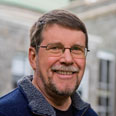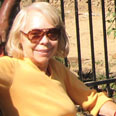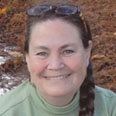Features
Beyond Pink and Blue
By Laura Markowitz ’85
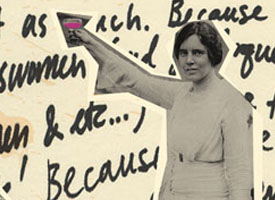 When Women’s Studies was established as a field of academic inquiry 40 years ago, humans had a relatively simple, binary view of gender: One was either female or male. One’s sex was inextricably linked to one’s reproductive organs. True, hermaphrodites existed as a kind of murky in-between, but that was resolved by assigning them at birth to either the pink team or the blue team.
When Women’s Studies was established as a field of academic inquiry 40 years ago, humans had a relatively simple, binary view of gender: One was either female or male. One’s sex was inextricably linked to one’s reproductive organs. True, hermaphrodites existed as a kind of murky in-between, but that was resolved by assigning them at birth to either the pink team or the blue team.This essentialist view of gender was challenged in 1990, when feminist philosopher Judith Butler published her groundbreaking book Gender Trouble. She argued that gender is a learned social behavior that we each perform.
Swarthmore students today cite Butler regularly when they talk about gender as “a fluid state of identity.” It seems almost obvious to this generation that femininity and masculinity are nothing more than social constructs that we act out—and that there are many more than two gender choices. The dismantling of the long-held binary view about gender was offered as a reason by professors and students as to why Swarthmore’s 23-year-old Women’s Studies Program should officially change its name in spring 2008 to Gender and Sexuality Studies.
Features
A New Model of Leadership for Africa
By Ken Maguire
 Africa’s rich and powerful are almost as easy to spot as its ubiquitous poor. Many of them shuttle to and from work and around towns like Accra, Ghana, in shiny chauffeured cars and oversized SUVs. That’s not how Patrick Awuah ’89 rolls. The man who wants to revolutionize how Africa educates its future chief executives of government and business—he’s spent $700,000 of his own money doing it—drives himself to work in a 1999 Honda CR-V, looking more like a suburban dad than a mover or shaker.
Africa’s rich and powerful are almost as easy to spot as its ubiquitous poor. Many of them shuttle to and from work and around towns like Accra, Ghana, in shiny chauffeured cars and oversized SUVs. That’s not how Patrick Awuah ’89 rolls. The man who wants to revolutionize how Africa educates its future chief executives of government and business—he’s spent $700,000 of his own money doing it—drives himself to work in a 1999 Honda CR-V, looking more like a suburban dad than a mover or shaker. Related Article
Features
Jazz with a Difference
By Carol Brévart-Demm
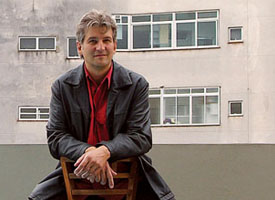 Captured in the stage light’s golden circle, Hans Lüdemann’s long, slender fingers deftly work the keyboard of a majestic grand piano. The internationally acclaimed German jazz virtuoso coaxes out a slow, haunting seven-note melody—a theme that will recur repeatedly as the piece “Turning Points” develops. Eyes closed, lips moving, Lüdemann murmurs to himself, “as if I’m breathing what I’m playing,” he says later.
Captured in the stage light’s golden circle, Hans Lüdemann’s long, slender fingers deftly work the keyboard of a majestic grand piano. The internationally acclaimed German jazz virtuoso coaxes out a slow, haunting seven-note melody—a theme that will recur repeatedly as the piece “Turning Points” develops. Eyes closed, lips moving, Lüdemann murmurs to himself, “as if I’m breathing what I’m playing,” he says later. Features
Bubble Buster
By Paul Wachter ’97
 During the terrible week of Oct. 6, 2008—Black Week, as it was later dubbed on Wall Street—the Dow Jones industrial average fell nearly 2,000 points, about 18 percent. It was the worst weekly decline in the index’s history but only the latest blow in a burgeoning economic crisis. The $8 trillion housing bubble had burst, taking with it some of nation’s largest financial institutions—like Lehman Brothers—and putting others such as AIG and Citigroup on life support with government dollars.
During the terrible week of Oct. 6, 2008—Black Week, as it was later dubbed on Wall Street—the Dow Jones industrial average fell nearly 2,000 points, about 18 percent. It was the worst weekly decline in the index’s history but only the latest blow in a burgeoning economic crisis. The $8 trillion housing bubble had burst, taking with it some of nation’s largest financial institutions—like Lehman Brothers—and putting others such as AIG and Citigroup on life support with government dollars. Features
WebMD: Is there a Doctor in the Mouse?
By Robert Strauss
 Nan-Kirsten Weinstock Forte ’84 was distraught. Her MCAT scores were disappointing, and her dream of becoming a doctor was dying. To console her, an adviser at Swarthmore suggested she try one of her other dreams—science journalism—while studying again for the difficult medical school entrance examinations. “It was fortuitous. I have never looked back."
Nan-Kirsten Weinstock Forte ’84 was distraught. Her MCAT scores were disappointing, and her dream of becoming a doctor was dying. To console her, an adviser at Swarthmore suggested she try one of her other dreams—science journalism—while studying again for the difficult medical school entrance examinations. “It was fortuitous. I have never looked back." Collection

- Managers Approve $8 Million in Budget Adjustments
- For Soil and Pots, Plants and People
- You Born Dis One!
- Citizenship and Collaboration Through Project Pericles
- Listening to Lead: Lessons from the Road
More collection articles from this issue
Connections

- Down Under: March 26 to April 8
- Nominations Sought for Carter Award
- Lifelong Learning
- Presidential Listening Tour Continues in Spring 2010
- Recent Alumni Connection Events
More connections articles from this issue
Books + Arts
Enterprise Solutions in the Developing World
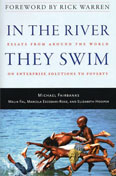 What leads to economic development in countries and regions around the world? Marcela Escobari-Rose ’96 and three co-editors/co-authors offer a distinctly different approach to this question: They nominate entrepreneurship as a central factor. In 29 essays, including two by Escobari-Rose, the role of human capital and initiative in creating paths out of poverty for poorer countries is highlighted. Drawing on personal reflections, the essayists describe incidents from their work as international development consultants.
What leads to economic development in countries and regions around the world? Marcela Escobari-Rose ’96 and three co-editors/co-authors offer a distinctly different approach to this question: They nominate entrepreneurship as a central factor. In 29 essays, including two by Escobari-Rose, the role of human capital and initiative in creating paths out of poverty for poorer countries is highlighted. Drawing on personal reflections, the essayists describe incidents from their work as international development consultants.
In My Life
Art as a Matter of Public Safety
By Barbara West ’90
 Facing stacks of dirty dishes, unopened mail, and haughty preteen critics, I need Toni Morrison’s wisdom to embark on my next artistic adventure. Before I push-pinned her words to my bulletin board, I’d considered my own art merely a narcissistic indulgence. Now I understand that it’s actually a matter of public (and private) safety.
Facing stacks of dirty dishes, unopened mail, and haughty preteen critics, I need Toni Morrison’s wisdom to embark on my next artistic adventure. Before I push-pinned her words to my bulletin board, I’d considered my own art merely a narcissistic indulgence. Now I understand that it’s actually a matter of public (and private) safety.
Q + A
People and Context
By Carol Brévart-Demm
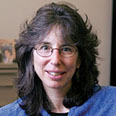 Professor of Educational Studies and Associate Provost Lisa Smulyan ’76 has always been interested in teaching as one way of addressing issues of inequity. Growing up in Syracuse, N.Y., she attended a public high school where black students were bussed to a predominantly white school; assemblies and dances were prohibited to prevent students from gathering in groups; and faculty and staff never once raised with students questions about race, education, and their own school environment.
Professor of Educational Studies and Associate Provost Lisa Smulyan ’76 has always been interested in teaching as one way of addressing issues of inequity. Growing up in Syracuse, N.Y., she attended a public high school where black students were bussed to a predominantly white school; assemblies and dances were prohibited to prevent students from gathering in groups; and faculty and staff never once raised with students questions about race, education, and their own school environment.

